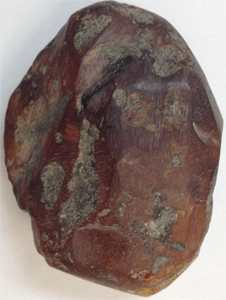Fossil amber shatters theories of glass as a liquid

(Phys.org) —Fact or fiction? Stained glass found in medieval cathedrals becomes thicker at the bottom because glass moves over time. For years researchers have had their doubts, now a team at Texas Tech University has further evidence that the glass is not going anywhere.
"Glass transition is related to the performance of materials, whether it is inorganic glass or organic polymers," said Gregory McKenna, professor of chemical engineering at Texas Tech. "For example, this would be important to people who own a boat made of fiberglass, or fly in an airplane made with epoxy-based composites. Information like that can help predict if that jet will still be flying in 30 years."
The idea for this research came from a doctoral student's qualifying exam, McKenna said. He gave Jing Zhao a problem relating to diverging time-scales using polyvinyl acetate, a substance often found in adhesives. Her results were consistent with a lack of divergence – contrary to received thought. So they decided to up the ante by performing similar experiments on a much older, ultra-stable glass.
They chose 20-million-year-old Dominican amber, and together with Whitacre Department Chair and Horn Professor Sindee Simon, Zhao performed calorimetric and stress relaxation experiments on the samples.
"What we found is that the amber relaxation times did not diverge," McKenna said. "This result challenges all the classic theories of glass transition behavior."
This research is supported by the National Science Foundation under a grant from the Division of Materials Research, Polymers Program. The process and results were recently published in Nature Communications.
Meanwhile, McKenna has recently acquired additional samples from around the world, including 220-million-year-old Triassic amber from Eugenio Ragazzi, a pharmacology professor at the University of Padova in Italy. The team now has plans to perform similar experiments on the new samples.
"We are in the very early stages," McKenna said. "However, our research definitely is 'to be continued.'"
More information: www.nature.com/ncomms/journal/ … full/ncomms2809.html
Journal information: Nature Communications
Provided by Texas Tech University


















